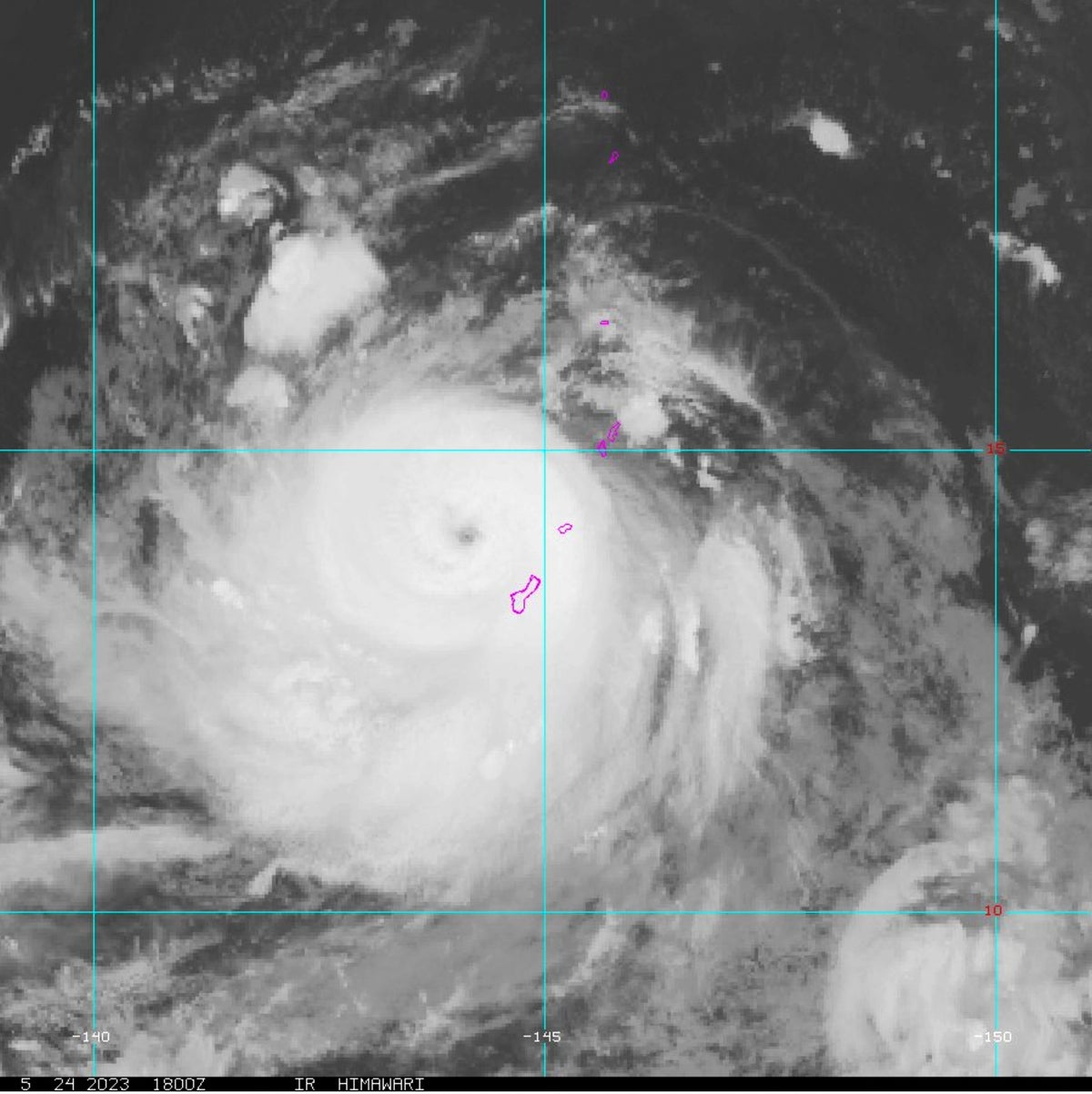
A powerful typhoon churned over the US Pacific territory of Guam and lashed the island with wind and rain.
Typhoon Mawar is the strongest to hit the US territory of roughly 150,000 people since 2002. The typhoon briefly made landfall Wednesday night as a Category 4 storm at Andersen Air Force Base on the northern tip of the island.
Follow our live blog for all the latest updates
A few commonly used weather terms and their definitions, which rely on material from the National Weather Service:
atmospheric river — Long and wide plumes of moisture that form over an ocean and flow through the sky over land.
blizzard — Wind speeds of 35 mph (56 kph) or more and considerable falling and/or blowing of snow with visibility of less than one-quarter mile (0.40 kilometer) for three or more hours.
cyclone — A storm with strong winds rotating about a moving center of low atmospheric pressure. The word sometimes is used in the United States to mean tornado and in the Indian Ocean area to mean hurricane.
derecho — A widespread and usually fast-moving straight-line windstorm. It is usually more than hundreds of miles long and more than 100 miles (161 kilometers) across.
El Nino, La Nina — El Nino is a naturally occurring climate phenomenon that starts with unusually warm water in the central and eastern equatorial Pacific and then changes weather worldwide. The flip side of El Nino is La Nina, which is an occasional but natural cooling of the equatorial Pacific that also changes weather worldwide.
hurricane or typhoon — A warm-core tropical cyclone in which the minimum sustained surface wind is 74 mph (119 kph) or more. Hurricanes are spawned east of the international date line. Typhoons develop west of the line. They are known as cyclones in the Indian Ocean and Australia.
microburst — Occurs when a mass of cooled air rushes downward out of a thunderstorm, hits the ground and rushes outward in all directions.
polar vortex — Usually refers to the gigantic circular upper air weather pattern in the Arctic region, enveloping the North Pole (but it can apply to the South Pole, too). It is a normal pattern that is stronger in the winter and keeps some of the coldest weather bottled up near the North Pole. The jet stream usually pens the polar vortex in and keeps it north. But at times some of the vortex can break off or move south, bringing unusually cold weather south and permitting warmer weather to creep up north.
snow squall — An intense but short-lived period of moderate to heavy snowfall, with strong winds and possible lightning.
storm surge — An abnormal rise of water above the normal tide, generated by a storm.
super typhoon — A typhoon in which the maximum sustained surface wind is 150 mph (241 kph) or more.
tornado — A violent rotating column of air forming a pendant, usually from a cumulonimbus cloud, and touching the ground. On a local scale, it is the most destructive of all atmospheric phenomena. Tornadoes can appear from any direction, but in the U.S. most move from southwest to northeast. Measured on F-scale from EF0 to EF5, which considers 28 different types of damage to structures and trees. An EF2 or higher is considered a significant tornado.
tornado warning — National Weather Service issues to warn public of existing tornado.
tornado watch — Alerts public to possibility of tornado forming.
tropical depression — A tropical cyclone in which the maximum sustained surface wind is 38 mph (61 kph) or less.
tropical storm — A warm-core tropical cyclone in which the maximum sustained surface winds range from 39 mph (63 kph) to 73 mph (117 kph).
tsunami — A great sea wave or seismic sea wave caused by an underwater disturbance such as an earthquake, landslide or volcano.
nor’easter — The term used by the National Weather Service for storms that either exit or move north along the East Coast, producing winds blowing from the northeast.
waterspout — A tornado over water.
wind chill factor — A calculation that describes the combined effect of the wind and cold temperatures on exposed skin.
wind shear — A sudden shift in wind direction and/or speed.







